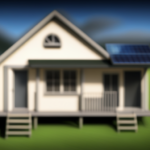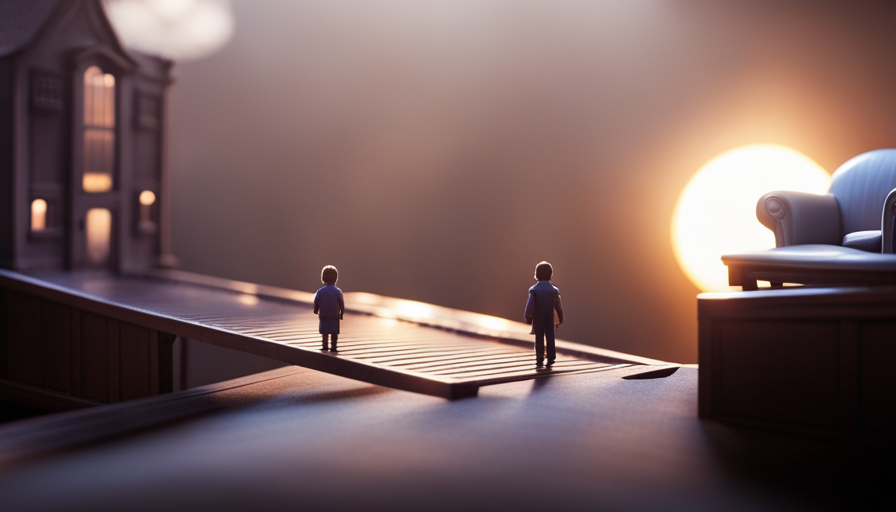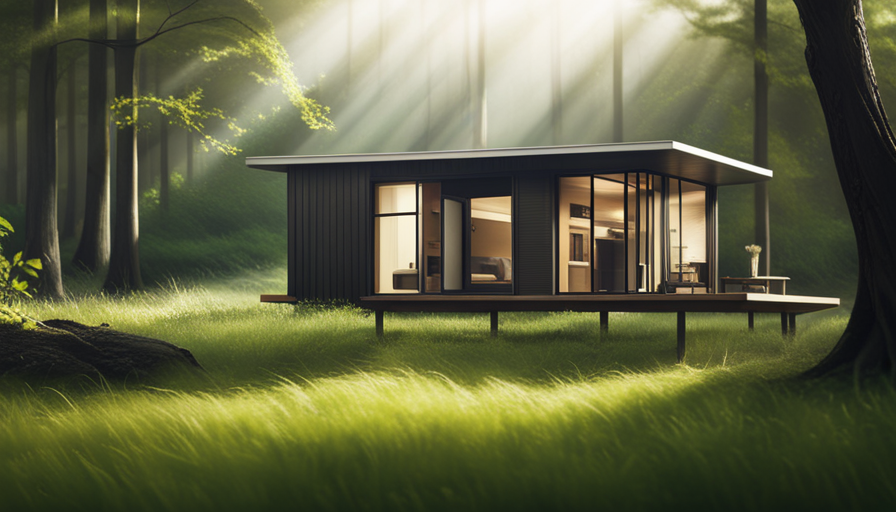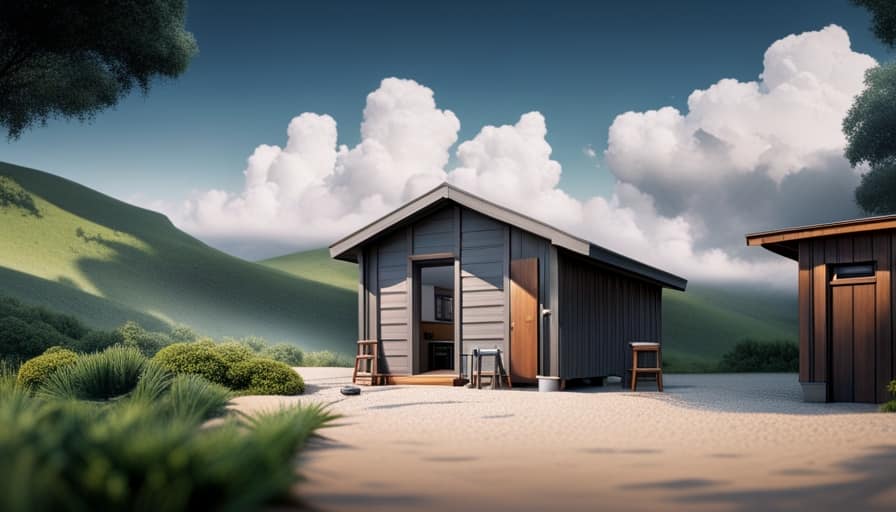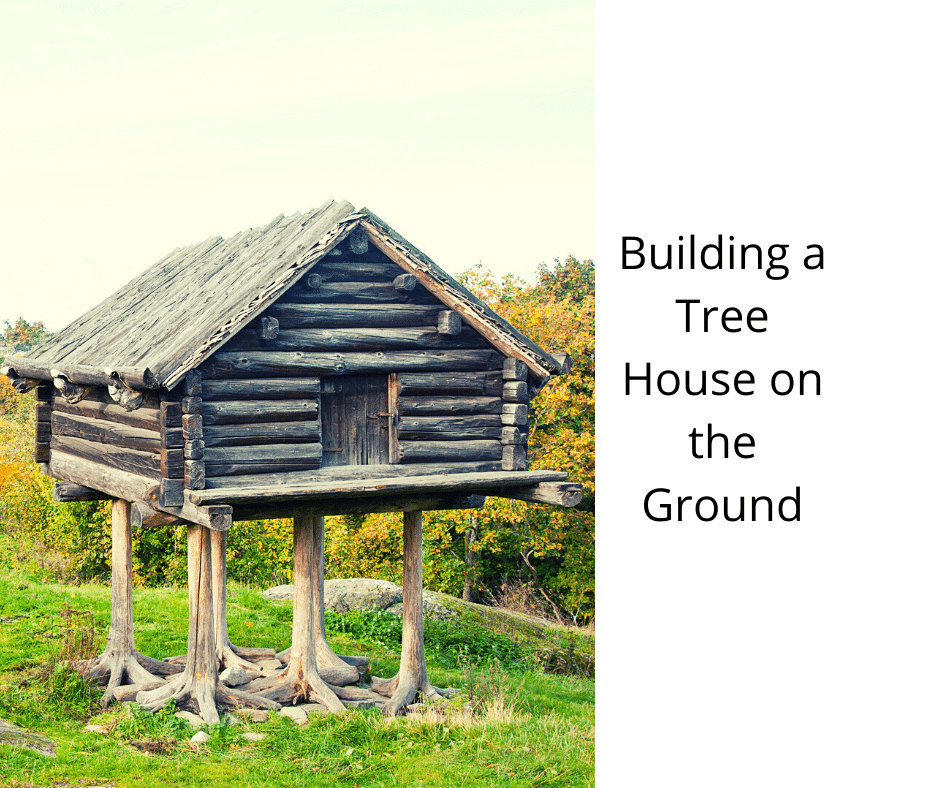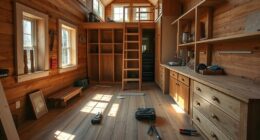Have you ever wondered about the process by which electricity powers your humble abode, allowing you to enjoy the modern conveniences while being surrounded by the beauty of nature? Get ready to learn as we delve into the fascinating journey electricity takes to illuminate your cozy home.
In this technical and detailed article, I will guide you through the intricate process of how electricity gets to a tiny house, from generation to distribution, and everything in between. We will explore the basics of electrical power, the utilization of renewable energy sources, and the importance of transmission and distribution systems.
Delving into the world of wiring and electrical panels, we will discuss safety measures to ensure a secure electrical system. Moreover, we will delve into the realm of energy conservation and efficiency, comparing off-grid and grid-tied electrical systems.
To top it off, we will explore battery storage and backup power options, as well as troubleshooting techniques for any electrical hiccups that may occur along the way.
Get ready to shed light on the electrifying journey of power to your tiny haven!
Key Takeaways
- Electricity for a tiny house is generated in power plants using sources like coal, natural gas, or nuclear energy.
- The electricity is transmitted through power lines in a power grid to reach different locations, including tiny houses.
- Transformers and power lines connected to the main electrical panel distribute the electricity to the tiny house.
- Renewable energy sources like solar power and wind power are clean and sustainable alternatives to traditional electricity generation, reducing carbon emissions and dependence on fossil fuels.
Understanding the Basics of Electrical Power
So you’re wondering how electricity makes its way to a tiny house, huh? Well, let’s start by understanding the basics of electrical power.
Electricity generation is the first step in the process. Most electricity is generated in power plants, where various sources like coal, natural gas, or nuclear energy are used to produce electricity.
Once generated, electricity is then transmitted through power lines, also known as the power grid. This vast network of interconnected power lines allows electricity to travel long distances from the power plant to different locations, including tiny houses.
In order for electricity to reach a tiny house, it needs to be distributed from the power grid to the house itself. This is done through a series of transformers and power lines that are connected to the main electrical panel in the house. The main electrical panel acts as the control center, distributing electricity to different circuits throughout the house, providing power for lights, appliances, and other electrical devices.
Understanding the basics of electrical power is crucial when it comes to ensuring a safe and reliable supply of electricity to a tiny house.
Now that we have a solid foundation, let’s delve into the fascinating world of generating electricity from renewable sources.
Generating Electricity from Renewable Sources
When it comes to generating electricity from renewable sources, two key options are solar power and wind power.
Solar power involves harnessing the energy from the sun by using photovoltaic panels to convert sunlight into electricity.
Wind power, on the other hand, utilizes the force of the wind to turn turbine blades, which then generate electricity.
These two methods offer sustainable and environmentally friendly ways to generate power for various applications, including tiny houses.
Solar Power
Solar power is like a ray of hope, bringing electricity to tiny houses with the help of sunlight. The installation of solar panels is a crucial step in harnessing this renewable energy source.
These panels, made up of photovoltaic cells, convert sunlight into electricity through the photovoltaic effect. When sunlight hits the panels, the photons in the light excite the electrons in the cells, creating an electric current. This current is then harnessed and stored in batteries or fed directly into the tiny house’s electrical system.
The benefits of solar power are abundant. It’s a clean and sustainable source of energy, reducing carbon emissions and dependence on fossil fuels. Additionally, it can provide energy independence and cost savings in the long run.
Transitioning to the next section on wind power, another renewable energy source, is the next logical step.
Wind Power
If you want to harness renewable energy and reduce your carbon footprint, wind power is a fantastic option for your tiny house. By installing a wind turbine, you can generate electricity from the natural power of the wind. The wind turbine consists of three main components: the rotor, the generator, and the tower. As the wind blows, it causes the rotor to spin, which in turn drives the generator to produce electricity. This renewable energy source is clean and sustainable, making it an excellent choice for environmentally conscious individuals. With proper maintenance, a wind turbine can provide a reliable source of electricity for your tiny house. Transitioning to the next section about the transmission and distribution of electricity, it is essential to understand how this generated power is distributed to various electrical devices in your tiny house.
Transmission and Distribution of Electricity
To power your tiny house, you’ll need to understand how electricity is transmitted and distributed. The transmission and distribution of electricity involves a complex system of infrastructure and maintenance known as the power grid.
The transmission infrastructure consists of high-voltage power lines that carry electricity from power plants to substations. These power lines are made of materials with low resistance to minimize energy loss during transmission.
The power grid maintenance is a crucial aspect of ensuring a reliable supply of electricity. It involves regular inspections, repairs, and upgrades to the transmission infrastructure. This includes monitoring the condition of power lines, transformers, and other equipment to prevent failures and outages. Additionally, the power grid maintenance also includes vegetation management to prevent trees and other vegetation from interfering with the power lines.
Once electricity reaches the substations, it undergoes a process called distribution. This involves stepping down the voltage to a level suitable for residential use and distributing it through a network of power lines. These power lines connect to electrical poles, which then supply electricity to individual homes, including tiny houses.
Understanding the transmission and distribution of electricity is essential for effectively powering your tiny house. It ensures a safe and reliable supply of electricity to meet your energy needs. Now, let’s move on to the next section and explore the wiring and electrical panels in a tiny house.
Wiring and Electrical Panels in a Tiny House
Once you’ve mastered the intricacies of the power grid, it’s time to delve into the heart of your tiny abode: the wiring and electrical panels, the lifeblood of your electrical system, pulsating with energy like a symphony of power. In order to ensure a safe and efficient electrical setup in your tiny house, it is crucial to follow proper wiring techniques and adhere to electrical code requirements.
When it comes to wiring techniques, there are a few key considerations to keep in mind. First and foremost, it is important to choose the right type and gauge of wire for each circuit. This will depend on the specific electrical load and distance the wire needs to travel. Additionally, wires must be properly connected using wire nuts or terminal blocks to ensure a secure and reliable connection. It is also essential to route wires away from potential hazards such as water pipes, sharp edges, or areas of excessive heat.
Adhering to electrical code requirements is equally important. These codes outline the standards and regulations for electrical installations, ensuring safety and preventing potential hazards. For example, code requirements may dictate the number of outlets and lighting fixtures required in each room, the height at which they should be installed, and the type of circuit breakers or fuses to be used.
Transitioning into the subsequent section about ensuring safety with electrical systems, it is crucial to understand that proper wiring techniques and adherence to electrical code requirements are essential steps in creating a safe and reliable electrical system for your tiny house.
Ensuring Safety with Electrical Systems
When it comes to the safety of your electrical system, you need to be aware of potential hazards and take precautions to protect yourself and your home. Ensuring code compliance is crucial to prevent any electrical mishaps. This means following the National Electrical Code (NEC) guidelines and regulations, which provide standards for electrical installations.
It is important to hire a licensed electrician who is knowledgeable about these codes to ensure that your tiny house’s electrical system is up to par.
Regular electrical system maintenance is also essential in ensuring safety. This includes routine inspections to identify any potential issues such as loose connections, frayed wires, or overloaded circuits. It is recommended to have an electrician inspect your electrical system at least once a year.
Additionally, keeping your electrical panel clean and free from any obstructions is important to prevent overheating and electrical fires.
By ensuring code compliance and conducting regular maintenance, you can greatly reduce the risk of electrical hazards in your tiny house. This will provide you with peace of mind and a safe living environment.
Moving forward, choosing the right electrical appliances and devices is the next step in creating an efficient and safe electrical system for your tiny house.
Choosing the Right Electrical Appliances and Devices
Choosing the right electrical appliances and devices is crucial in ensuring an efficient and safe electrical system for your small dwelling. When it comes to electrical load management, it is essential to consider the power requirements of each appliance and device to prevent overloading circuits. This can be achieved by referring to the electrical code compliance guidelines, which outline the maximum load capacity for different circuits.
To assist in understanding the power requirements of various appliances and devices, I have created a table below:
| Appliance/Device | Power Rating (Watts) | Recommended Circuit |
|---|---|---|
| Refrigerator | 150-200 | Dedicated |
| Microwave | 700-1200 | Dedicated |
| Air Conditioner | 1000-5000 | Dedicated |
By referring to this table, you can determine the appropriate circuit for each appliance or device based on its power rating. This ensures that the electrical load is distributed evenly across circuits, minimizing the risk of overloading.
Choosing the right electrical appliances and devices is vital for effective electrical load management and compliance with electrical codes. By understanding the power requirements of each appliance and device, you can ensure a safe and efficient electrical system for your tiny house. Transitioning into the next section about energy conservation and efficiency in a tiny house, it is important to consider ways to minimize power consumption without compromising comfort.
Energy Conservation and Efficiency in a Tiny House
When it comes to energy conservation and efficiency in a tiny house, there are two key points to consider. First, LED lighting is a great option as it consumes less energy and lasts longer compared to traditional light bulbs. Second, energy-saving appliances such as energy-efficient refrigerators and air conditioners can significantly reduce energy consumption in a small space.
In addition to LED lighting and energy-saving appliances, proper insulation and weatherproofing are essential. These measures prevent heat loss or gain, ensuring the house remains energy-efficient throughout the year.
LED Lighting and Energy-Saving Appliances
To save energy in your tiny house, you can use LED lighting and energy-saving appliances, which create a cozy and efficient atmosphere.
LED lighting has numerous benefits, such as lower energy consumption, longer lifespan, and higher brightness compared to traditional incandescent bulbs. These lights convert almost all energy into light, minimizing wastage as heat. Additionally, LED lights are highly durable, making them perfect for a mobile and compact living space like a tiny house.
Energy-saving appliances, on the other hand, are designed with advanced technologies that reduce power consumption without compromising functionality. These appliances utilize features like programmable timers, energy-efficient motors, and smart sensors to optimize energy usage.
By incorporating LED lighting and energy-saving appliances, you can significantly reduce your energy consumption and carbon footprint in your tiny house.
Moving on to the next section about insulation and weatherproofing, it is essential to ensure maximum energy efficiency.
Insulation and Weatherproofing
Now that we’ve covered LED lighting and energy-saving appliances, let’s move on to the next crucial aspect of electricity in a tiny house: insulation and weatherproofing.
Insulation plays a vital role in maintaining a comfortable temperature inside the house while minimizing energy loss. There are various insulation techniques available for tiny houses, such as using spray foam insulation, rigid foam boards, or natural materials like straw or wool.
Additionally, weatherproofing methods ensure that the house remains protected from external elements like rain, wind, and snow. This can include installing weatherstripping, sealants, and using a water-resistant membrane on the exterior walls.
By implementing effective insulation and weatherproofing, a tiny house can significantly reduce energy consumption and create a more sustainable living environment.
Now, let’s delve into the next section and explore the different electrical systems used in tiny houses: off-grid vs. grid-tied systems.
Off-Grid vs. Grid-Tied Electrical Systems
In an off-grid electrical system, a tiny house is like a self-sufficient island, generating its own power without relying on the traditional grid. Off-grid living provides the freedom to live in remote locations without access to utility power lines. However, it also comes with certain challenges and considerations.
One of the main advantages of an off-grid system is the independence it offers. You have control over your energy production and consumption, allowing you to live sustainably and reduce your carbon footprint. Additionally, you’re not subject to grid-tied regulations or utility companies, providing a sense of autonomy.
However, off-grid systems require careful planning and design. Generating electricity typically involves solar panels, wind turbines, or a combination of both. These sources produce direct current (DC) electricity, which needs to be converted to alternating current (AC) to power standard household appliances. This requires an inverter, which converts the DC power into AC power suitable for use. It’s important to accurately size your off-grid system to meet your energy needs, considering factors such as the available sunlight or wind resources in your area.
Off-grid electrical systems offer the advantage of self-sufficiency and independence. However, they require careful planning and sizing to ensure reliable power generation. Transitioning to the subsequent section about battery storage and backup power options, it’s essential to consider these aspects to maintain a consistent power supply in a tiny house.
Battery Storage and Backup Power Options
One option you have for maintaining a consistent power supply in your off-grid system is to invest in battery storage, such as a lithium-ion battery bank. This allows you to store excess energy generated during the day for use at night or during periods of low sunlight.
For example, imagine you live in a remote mountain cabin and rely on solar panels for electricity. With a battery storage system, you can store the excess energy generated during the day to power your home at night when the sun is not shining.
Battery Capacity:nnChoosing the right battery capacity is crucial to ensure you have enough stored energy to meet your needs. Factors to consider include your daily energy consumption, the number of days you want the battery to sustain you without sunlight, and the efficiency of your solar panels. A higher battery capacity means more stored energy, but it also requires more space, adds weight, and comes at a higher cost. Finding the right balance is essential.
Solar Panel Placement:nnProper solar panel placement is crucial to maximize energy generation. Placing them in an area with unobstructed sunlight exposure for the longest duration is ideal. Factors to consider include the angle of inclination, orientation towards the sun, and shading from nearby trees or buildings.
Battery storage and efficient solar panel placement are key elements in maintaining a reliable power supply for your off-grid tiny house. However, even with these systems in place, electrical issues can still arise. Transitioning into the subsequent section, we will explore how to troubleshoot these issues and ensure uninterrupted power flow.
Troubleshooting Electrical Issues in a Tiny House
Imagine you’re living off-grid in a cozy cabin and suddenly, your lights flicker and your appliances stop working. How do you troubleshoot and fix electrical issues in this remote setting?
Troubleshooting electrical issues in a tiny house requires a systematic approach to identify and resolve the problem. The first step is to check the power source, ensuring it’s properly connected and functioning.
If the power source is intact, the next step is to inspect the electrical panel for any tripped circuit breakers or blown fuses. Resetting the tripped breakers or replacing the blown fuses can often restore power to the affected areas.
If the issue persists, it’s crucial to examine the wiring for any signs of damage or loose connections. A thorough visual inspection can help identify any obvious issues that may be causing the electrical problem.
If no visible problems are found, a multimeter can be used to test the continuity and voltage of the circuit. This can help pinpoint the exact location of the issue.
Once the problem is identified, repairing or replacing the faulty component becomes necessary. Regular electrical maintenance, such as checking connections and cleaning equipment, can help prevent future issues.
By following these troubleshooting steps and implementing proper electrical maintenance, you can efficiently resolve electrical issues in your tiny house.
Frequently Asked Questions
How much does it cost to set up an off-grid electrical system for a tiny house?
Setting up an off-grid electrical system for a tiny house involves a cost breakdown that includes alternative power sources. The initial investment can vary depending on factors like the size of the house and the energy requirements.
Solar panels, batteries, and inverters are common components of such a system. The cost can range from $10,000 to $30,000, but the long-term savings on utility bills make it a worthwhile investment for those seeking self-sufficiency.
Can I use solar power to run all the electrical appliances in my tiny house?
Yes, it’s possible to use solar power to run all the electrical appliances in a tiny house. Solar power is a highly efficient alternative energy source that can provide electricity for various devices. By installing solar panels on the roof, they capture sunlight and convert it into usable energy. This energy is then stored in batteries or fed directly into the electrical system of the house. Solar power offers a sustainable and cost-effective solution for powering a tiny house.
What are the steps involved in connecting a tiny house to the grid?
To connect a tiny house to the grid, the first step is to obtain a permit from the local utility company.
Next, a licensed electrician will install a meter base and disconnect switch.
Then, a trench is dug to bury the electrical conduit from the house to the grid connection point.
The electrical installation includes wiring the main breaker panel, grounding system, and connecting to the grid.
Finally, an inspection is conducted to ensure compliance with safety regulations.
Grid connection and electrical installation are crucial steps in powering a tiny house efficiently.
How often should I get my electrical system in a tiny house inspected?
I should get my electrical system in my tiny house inspected regularly to ensure its safety and proper functioning. Regular inspections of the electrical system are important for identifying any potential issues or hazards that may arise over time. By conducting routine inspections, I can address any maintenance needs promptly, minimizing the risk of electrical accidents or damage. This proactive approach to electrical system maintenance is crucial for maintaining a safe and efficient tiny house.
What are the common electrical issues that can occur in a tiny house and how can I troubleshoot them?
Living in a tiny house is like sailing a miniature ship on a vast electrical sea. Common electrical issues can cause storms on this peaceful voyage.
One such issue is circuit overload, where too many devices strain the system. To troubleshoot, I suggest redistributing the load or upgrading the electrical panel.
Another issue is faulty outlets, which can be resolved by checking the wiring or replacing the outlet.
Remember, attention to these issues ensures smooth sailing in your tiny haven.
Conclusion
So there you have it, the intricate dance of electricity in a tiny house. From the generation of power through renewable sources to the transmission and distribution of that power, every step plays a vital role in ensuring a steady flow of electricity.
The wiring and electrical panels, along with safety measures, guarantee that everything runs smoothly. Energy conservation and efficiency are key in a tiny house, and the choice between off-grid and grid-tied systems determines how power is stored and utilized.
And when issues arise, troubleshooting becomes essential. In this delicate symphony of electrical systems, there’s always a solution to keep the lights on in your tiny abode.
Hi, I’m Emma. I’m the Editor in Chief of Tiny House 43, a blog all about tiny houses. While tree houses are often associated with childhood, they can be the perfect adult retreat. They offer a cozy space to relax and unwind, surrounded by nature. And since they’re typically built on stilts or raised platforms, they offer stunning views that traditional homes simply can’t match. If you’re looking for a unique and romantic getaway, a tree house tiny house might just be the perfect option.







